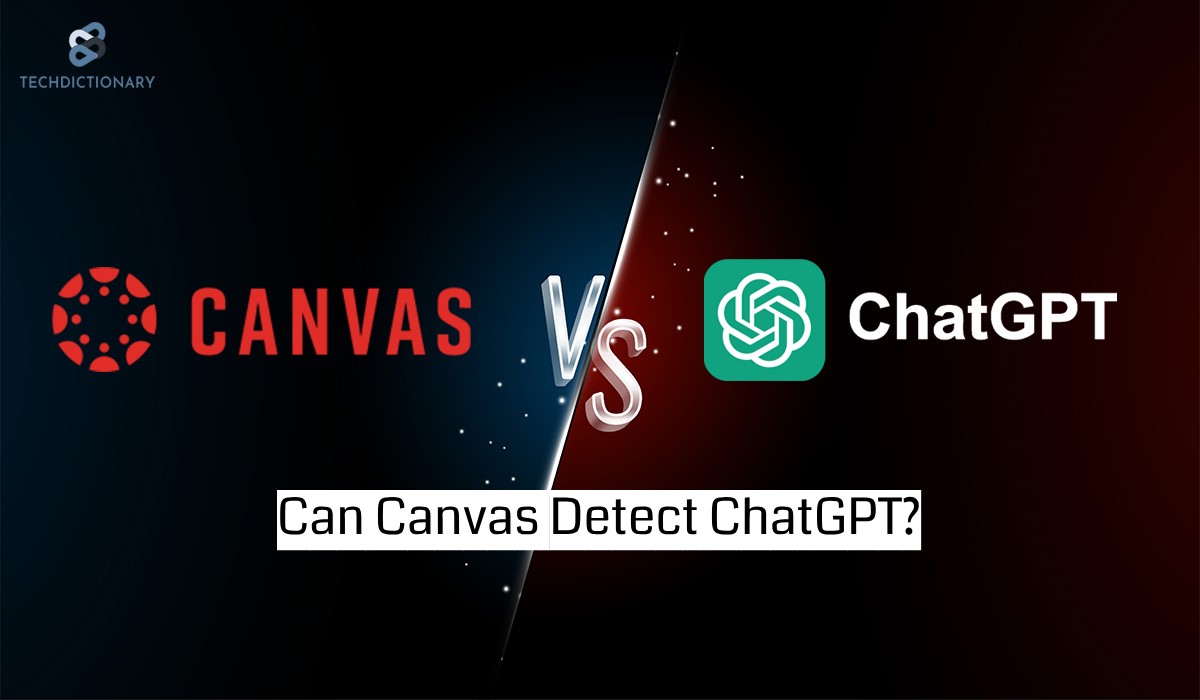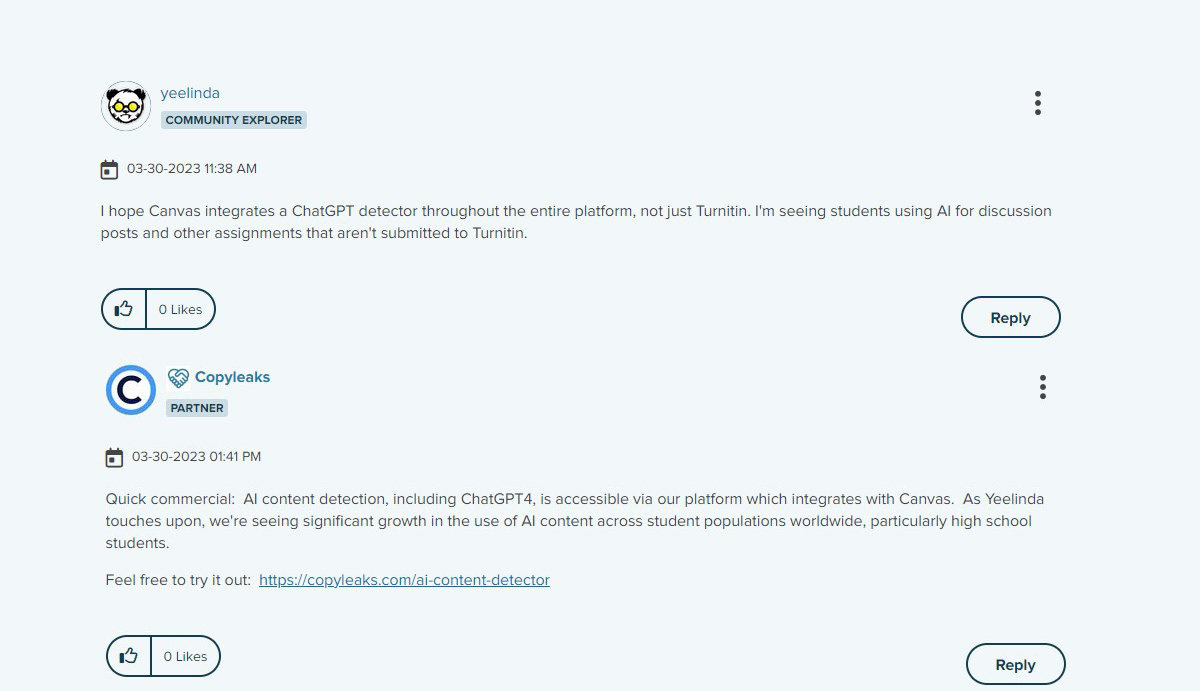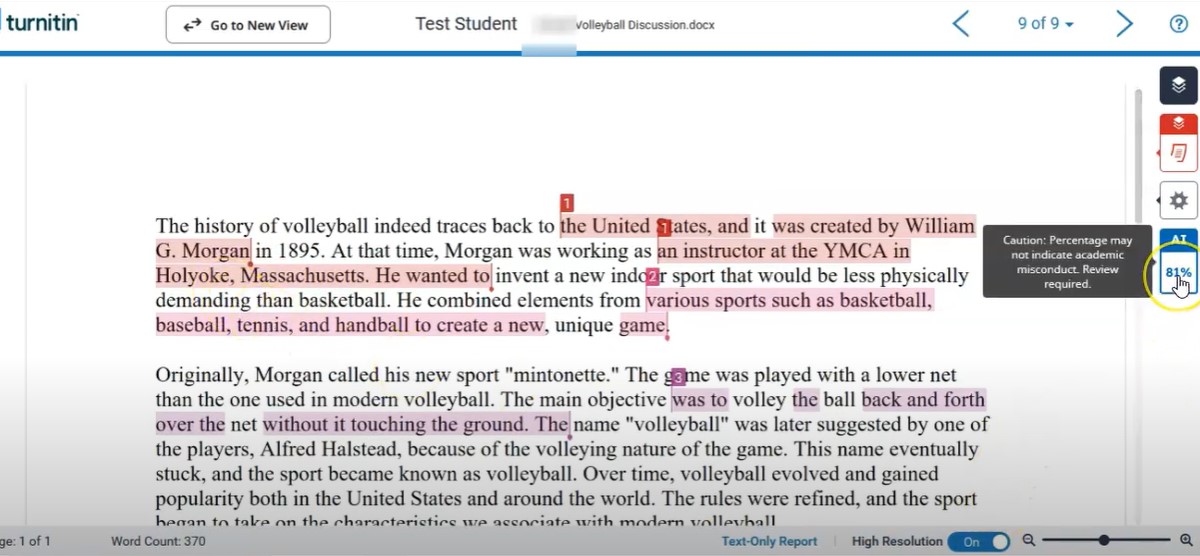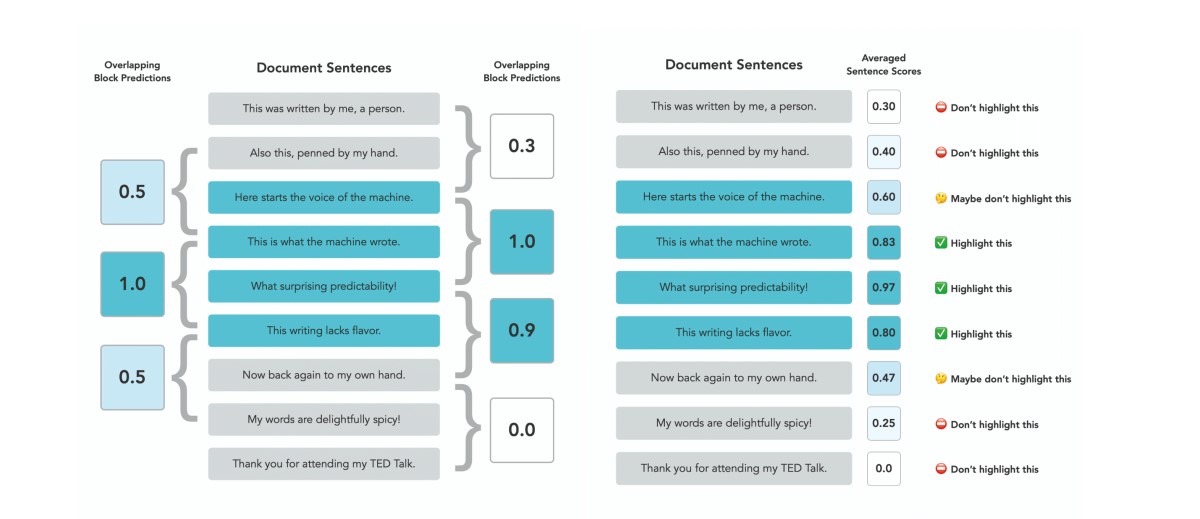
Imagine nailing every assignment effortlessly by providing prompts and letting AI handle the rest. ChatGPT might seem like the perfect sidekick for your academic adventures on Canvas. But here’s the catch: Can Canvas detect ChatGPT and other AI writing tools?
This article will shed light on the Canvas detects chatGPT or any cheating, like plagiarism. Let’s dive right in!
The quick answer is NO. Canvas itself cannot detect ChatGPT in an essay since it is a learning management system rather than an AI detector. However, as a third-party integration, Turnitin can help Canvas detect ChatGPT as AI content or plagiarism to a certain extent.

Copyleaks, as a partner, has announced that users can check ChatGPT on Canvas. Source: Canvas Community
No, Canvas cannot directly tell if you are using ChatGPT or other AI writing tools.
If students use AI-generated content within Canvas, their assignments will likely be flagged by Turnitin, an integrated tool, due to robotic writing patterns, a lack of personal insights, or a speedy turnaround time.

Canvas detects AI writing through Turnitin. Source: Youtube – ProfessorAllen
However, no AI detector can guarantee 100% accuracy. If your work is still flagged as AI text, consider our tips to prove you didn’t use AI.
You may be interested in: Who is Responsible for AI Mistakes? Revealed The Answer in 2025
Canvas can detect:
Canvas cannot detect:
As mentioned, Turnitin is one of the most used plugins for identifying AI-generated content within Canvas.
First, it divides the assignment into chunks of approximately 200 to 300 words (about 5 to 10 sentences). Later, it overlaps those chunks to capture each sentence in context. Those chunks are then run through an AI detection model and assigned a score between 0 and 1 for each sentence. A score of 0 means the sentence is likely human-written, while a 1 indicates AI produced the whole sentence.

How Canvas Detects ChatGPT Using Turnitin: An Originality Report (Source: Turnitin)
Turnitin uses advanced algorithms to analyze writing style, sentence structure, and content originality, making it highly effective at spotting both plagiarism and AI-generated text. If you’re curious about how these detection methods work in detail and want to better understand your Turnitin reports, we’ve covered everything you need to know in a separate guide.
You may be interested in: How to Reduce Similarity Score On Turnitin? 7 Tips To Reduce
NOTE: AI tools like ChatGPT can be great for inspiration and support, but keeping your writing original is what counts. Stay mindful by citing AI content when needed, rewriting ideas in your voice, and reviewing everything with care. If you’re looking for practical tips to strike the right balance, there are plenty of helpful resources to guide you.
AI tools should be used as sidekicks for your learning journey rather than shortcuts for the exams. When using generative AI for academic work, keep in mind these ethical considerations.
It is crucial to exercise caution when using any AI-powered writing tool to cheat on academic assignments. Such actions may result in severe consequences, including failing grades, academic punishment, ethical problems, and even legal implications. It is always best to avoid such practices and uphold academic integrity.
Can Canvas detect ChatGPT? The answer is no, Canvas cannot detect chatGPT content by itself. Instead of a built-in feature, an integration – Turnitin can let Canvas detect ChatGPT-generated content.
At TechDictionary, we believe in using AI writing tools ethically to boost your creativity and skills, not as shortcuts. Feel free to share your experiences or questions in the comments —we’re here to learn and discuss together!

